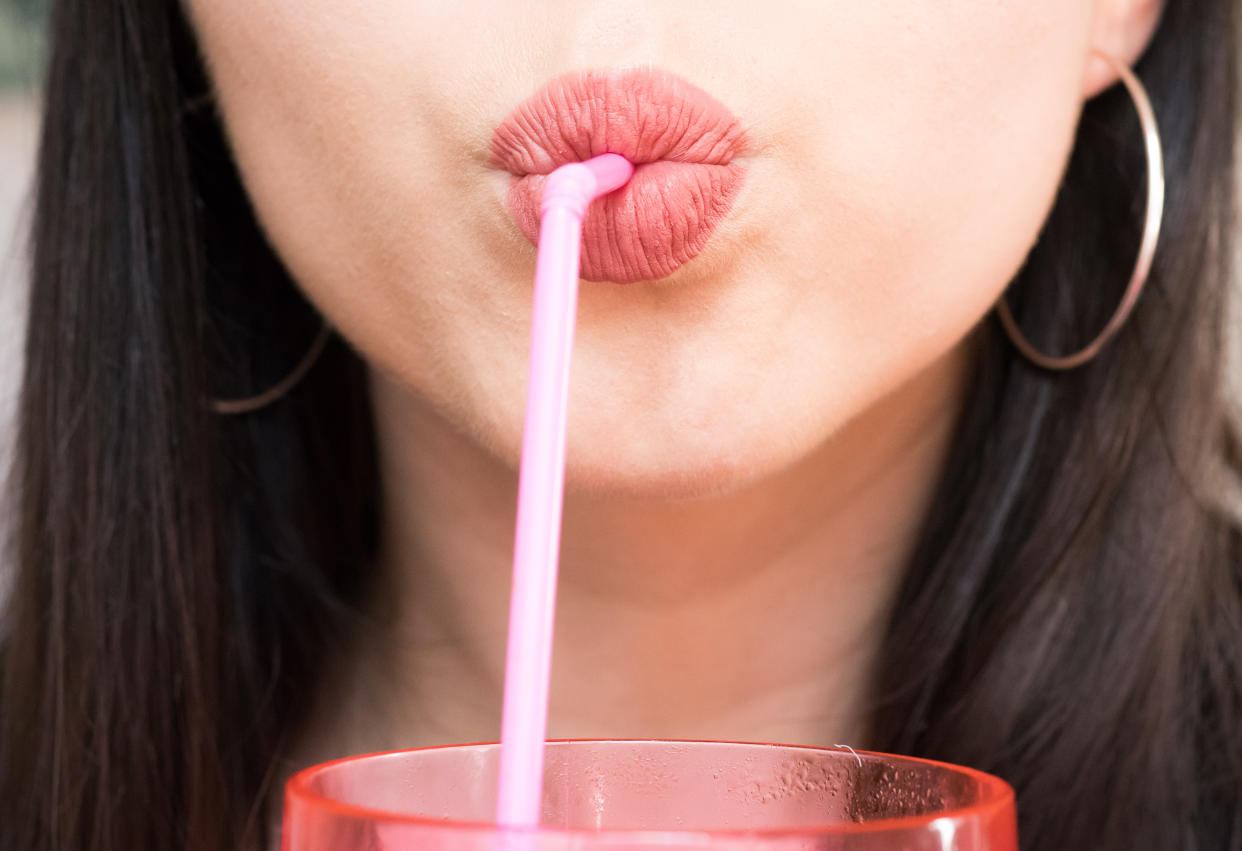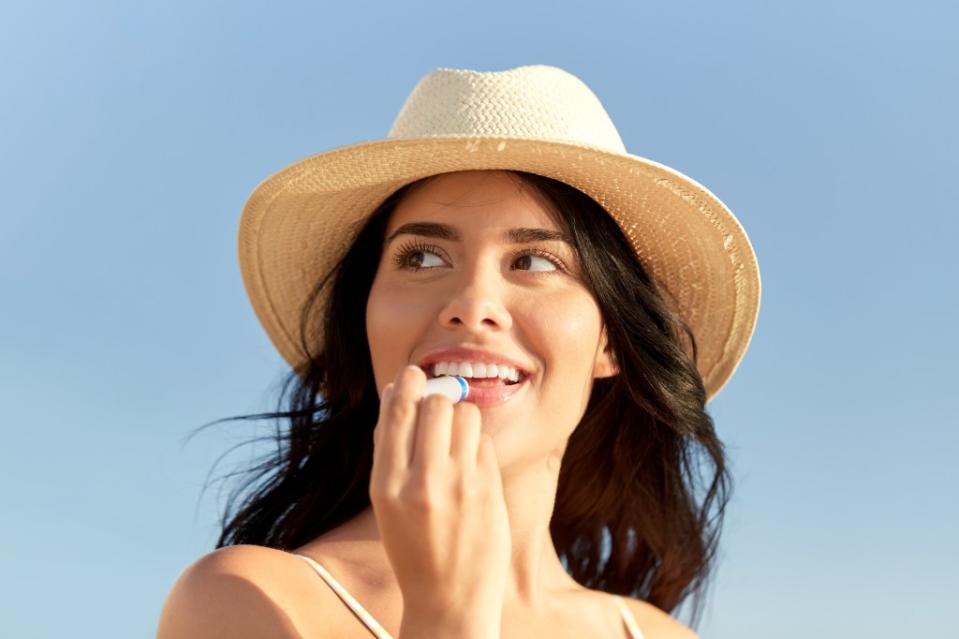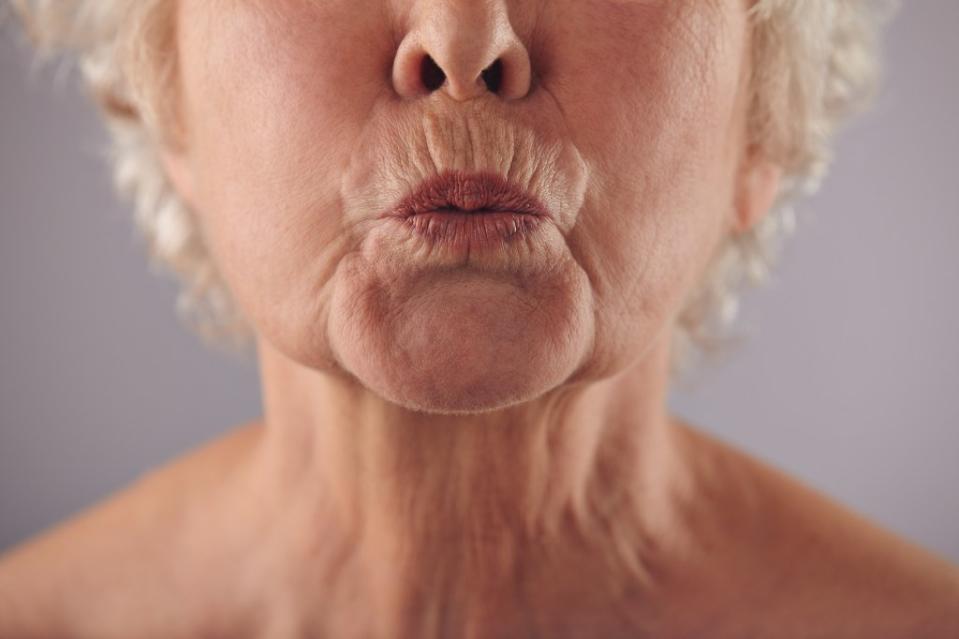Do straws actually cause lip wrinkles? A plastic surgeon reveals the answer

The viral Stanley tumbler is currently one of the hottest status symbols across the U.S. as a new generation of mindful, health-conscious young adults clamor for the coolest way to stay hydrated.
But even though some of the main selling points of the 40-oz Stanley Quencher Tumbler are the side handle and straw, some TikTok users are now warning against drinking repetitively out of the slurping tool for one reason: lip wrinkles.
Sometimes referred to as lip lines, lipstick lines or smoker’s lines, lip wrinkles are vertical furrows that develop along and above one’s upper lip, according to Healthline.
To keep the appeal of a straw while trying to avoid lip wrinkles, TikTokkers have been purchasing an additional accessory for their Stanleys — anti-wrinkle straws are the latest addition to the hydration craze.
But do straws actually cause unsightly folds?
“The long-term effect of repeated pursing and drinking through a straw or other movements that cause pursing of the lips is the development of fine lines in that area,” American Society of Plastic Surgeons (ASPS) member surgeon Lara L. Devgan, MD, confirmed to The Post.
The reason it happens, Devgan explained, is that “the skin is like a piece of paper.”
“If you repeatedly fold it over and over again in the same folding patterns, you will get etched lines, and it becomes progressively harder for those to go away,” she said. “When we see people who drink through straws repeatedly, those lines become deeper and deeper.”
While these lines have been referred to as smoker’s lines in prior eras, they can appear in anybody — whether you smoke or not and whether you drink through a straw or not, Devgan clarified — “just in virtue of making the pursing movement of the lips.”
The muscle around the lips, called the orbicularis oris, controls the shape and movements of the lips and is shaped like a purse string, so narrowing the shape creates more tension on the skin, which is what creates the etching of lines, she explained.
Straws and smoking are the big culprits of lip wrinkles that people think about, but Devgan said that it’s simply just any strong expression pattern that involves the pursing of the lips, such as making a kissy “duck” face to take a selfie or to apply makeup.
There are other factors that can contribute to the formation of lip wrinkles as well, including sun damage and exposure to UVA and UVB rays — which promote aging around the lips and loss of volume to the lips themselves — as well as genetics.
“The apple doesn’t fall far from the tree when it comes to facial aging, and if you have a genetic or familial history of more fine lines and deep wrinkles on the face, then you’re likely to be in that category, too,” Devgan explained.

The people who have the “youngest looking” lips and mouths over the ages are those who don’t overuse the pursing function of the lips.
As Devgan explained, a 5-year-old wouldn’t have lip wrinkles even if they drank through a straw a lot.
“You could drink through a straw every day if you’re a child and nothing would happen because you have so much collagen that’s giving bounciness and turgor to your tissue,” she said. “But with time and aging, your habits catch up to you.
“You know that expression that when you’re young, you have the face that you’re born with, and when you’re old, you have the face that you deserve? You have all the magic of youth and lush, full collagen.”
However, there are a few techniques one can do to reduce the deep lines of lip wrinkles, all of which are designed to return them “to the level you had at a younger age when you could better withstand movement,” Devgan explained.
The least invasive way would be using topical products such as retinoids, hyaluronic acid and vitamin C, B and E Ferulic — which Devgan claims are the “three mainstays of reducing wrinkles.” Other products include retinol bakuchiol to improve skin resurfacing and minimizing fine lines or a hyaluronic acid-based lip-plumping gloss that can help reduce the appearance of fine lines.
Another way to reduce mouth ridges is a combination of Botox and fillers, Devgan said. A very tiny micro-dose of Botox and injectable filler can restore lost volume around the mouth and smooth out fine lines. The use of very subtle lip augmentation can replace lost collagen in the lips.
“This is a very delicate technique that should be done in expert hands, so you avoid irregularity or loss of muscular function,” Devgan added.
Laser resurfacing, micro infusion and microneedling can regenerate tissue around the mouth and resurface the skin. In addition, the most invasive option would be surgical, such as autologous fat grafting or a surgical lip lift, which can be used to restore the overall aging of the lips.

If someone hopes to prevent getting lip wrinkles before they have the chance to show up, Devgan suggests a meticulous skincare routine and avoiding things that are associated with more wear and tear on the lips in your day-to-day life. That would include pursing your lips, drinking through a straw, smoking and scrunching up your face.
Additionally, avoiding exposure to UV light and nicotine will help with overall skin quality, Devgan adds.
“It’s kind of like the higher the thread count your sheets, the more your sheets will be able to withstand a little bit of wrinkling here and there and a little bit of movement,” she explained.
“So it’s both things. It’s the active factors, like, what are you doing? Are you drinking through a straw every single day and smoking a cigarette and doing a kissy face for every selfie? But it’s also more passive, background things,” she shared. “So not just genetics, but also all of those lifestyle habits that plastic surgeons love to talk about.
“You know: genetics, skincare, smoking, sun exposure.”
If your go-to selfie pose is a kissy face, try what Devgan calls a “subtle Mona Lisa smile” instead to take some of the tension off the lips.
“A subtle Mona Lisa smile is an idealized expression for aging,” she explained. “People used to use the expression of ‘resting scowl face,’ and you wanna think about if you are subconsciously holding your face in repose in a position that’s going to contribute to additional agency.”

